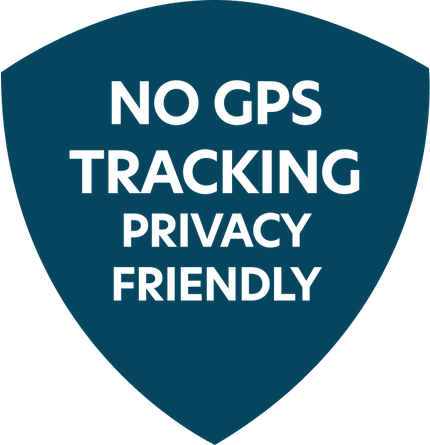Our solution for telematics without GPS
Monitoring driving behaviour without violating driver privacy


Location data? Not needed.
We often and passionately proclaim that our solution does not use GPS. Nor do we store or share location data with others. Yet the app asks permission for location data. What exactly is the situation?
The concept of location data technically goes far beyond GPS. A smartphone can determine your location in many different ways. Via the nearest GSM mast, for example, or the Wi-Fi network you are connected to. A Bluetooth connection and, of course, your GPS location also play a role. Each of these ways of determining location involves a different chip in your phone. The GPS chip is actually only switched on when your location needs to be determined with great accuracy, using GPS satellites. By definition, we do not turn on the GPS chip in drivers' smartphones
Not using GPS has two huge advantages: there is no invasion of individual drivers' privacy, but at the same time smartphone battery consumption is also much lower. This is because the GPS components in a smartphone consume a relatively large amount of energy.
Two reasons why we do ask permission to share location data

Reason one: operating system limitations

On an iPhone, it is possible to swipe away our app. This is not convenient, because then part of our solution no longer works. We use a built-in feature from Apple to start the app automatically when you start driving. This is called 'significant change'. In the background, your phone determines your approximate location via GSM masts. This is a very imprecise determination, to within 500 metres. If you suddenly change position considerably, it causes a 'significant change'. This causes our app to automatically launch and all our functions to work again when you drive. We only use this location data to launch the app and do not store any data.

Because Bluetooth is also indirectly a form of location tracking, Android 11 and below ask for permission to share location data. From Android 12 onwards, permission is asked directly for the specific use of Bluetooth.
Reason two: the accelerometer
To determine whether you are driving or stationary, we use the accelerometer in the pod. This is a sensitive sensor, so in some cases this way does not work well. For example, if the engine causes a lot of vibrations when standing still. In such cases, you can specify in the app that you want to use GPS speed to determine if you are driving. If you turn this feature on, the GPS sensor will measure whether you are driving over 10 km/h. We do not store this speed anywhere, nor the location where you drive. The GPS data is only used to determine whether you are driving or not.
One exception for the use of GPS location data
SafeDriveResponse is the only exception for which we explicitly turn on your phone's GPS chip and even share your location data. The only time this happens is just after an accident with your car. When SafeDriveResponse detects a collision, we send out a distress signal including the GPS coordinates to help you as quickly as possible. Where exactly that distress signal goes depends on the agreements made about this with your employer, leasing company or insurance company.
Finally, a legal argument. The strict European privacy rules are very clear about what you can and cannot do with customer data. First, you have to write down very precisely what data you collect and what you do with it. Secondly, you have to keep exactly what you promise to your customer. In our case, this is described in the privacy statement that you can read when you first use our app. If we don't keep our agreements, we are in breach. So it is in both your and our interest that we handle your data properly.